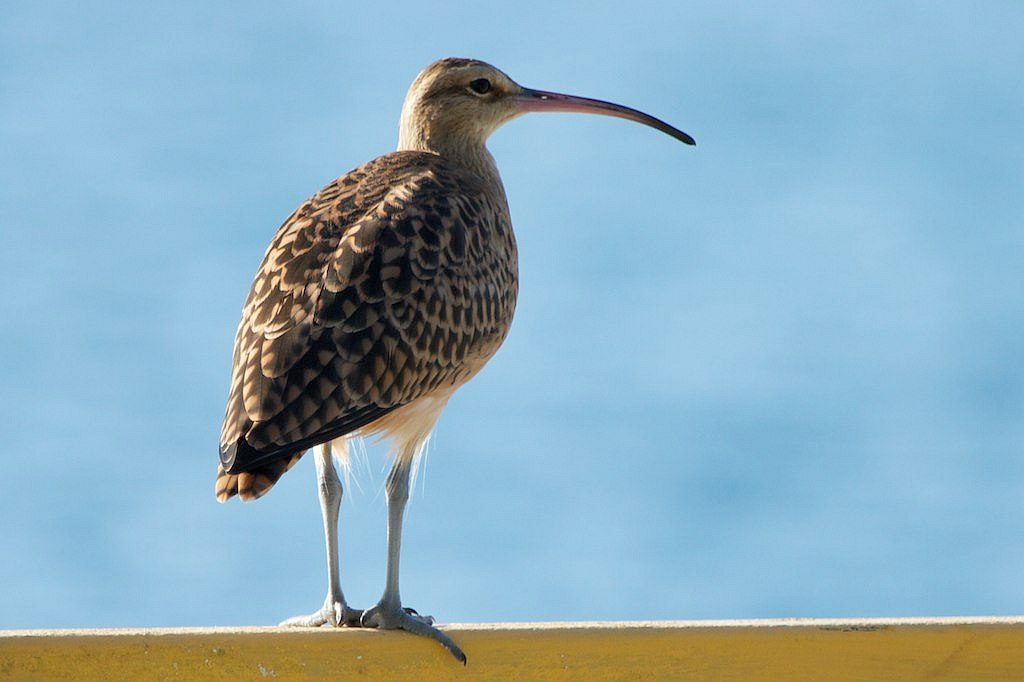
Bristle-thighed curlews are so rare and hard to find that they’ve been called the birders’ Holy Grail. The word “Tahiti” in their scientific name, Numenius tahitiensis, tells us why. These birds are Pacific Islanders. Their remote breeding location in Alaska was not discovered until 1948.
Adult bristle-thighed curlews spend only two months on their breeding grounds at the central Seward Peninsula and Yukon Delta. They arrive in late May and begin nesting almost immediately.
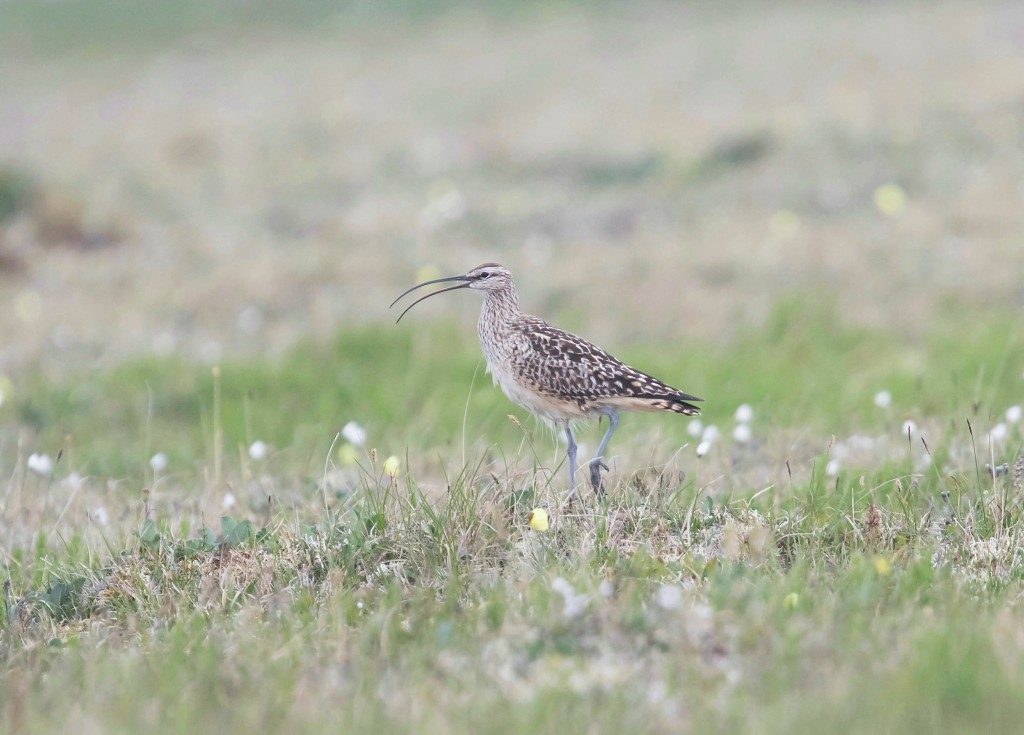
When the eggs hatch in June, the chicks are precocial and soon walk off the nest.
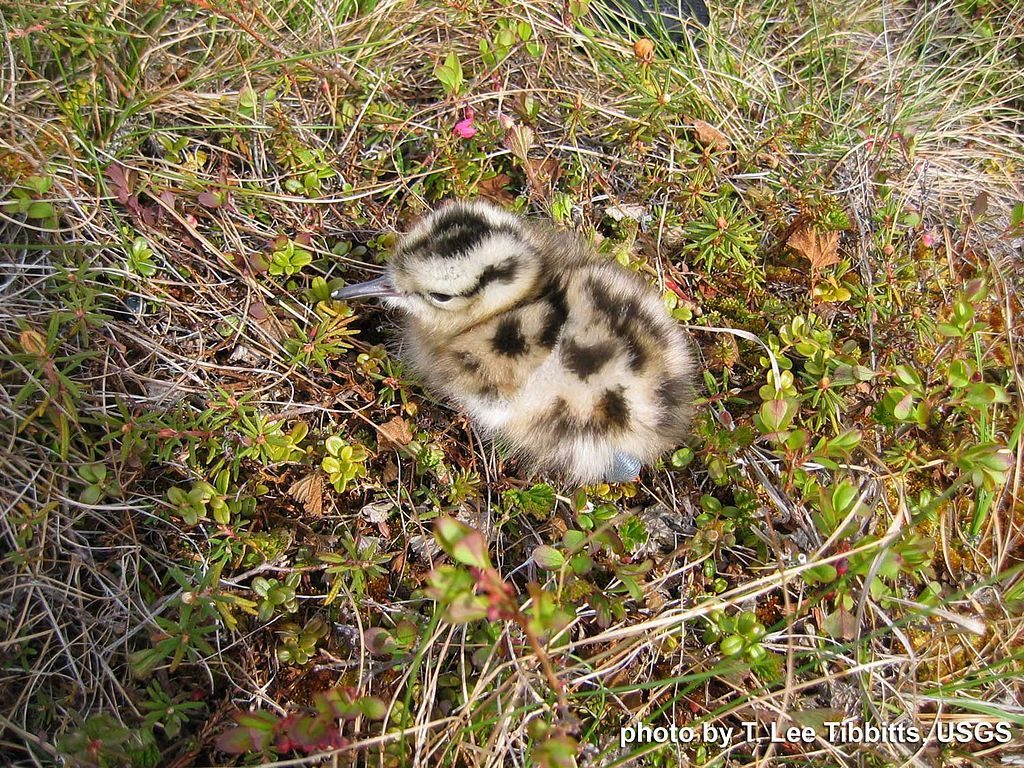
At 3+ weeks old they learn to fly but they aren’t independent yet. At 5 weeks their parents leave them with a few caretaker adults and depart for the staging grounds at the Bering Sea.
There they fatten up for the first leg of their journey home — a non-stop 2,500 mile flight to Laysan, Midway Atoll in the Hawaiian islands. For some curlews the final destination is much further, as shown on the map below. (Red spots are breeding range, white arrow is first stop, blue circles are wintering locations.)
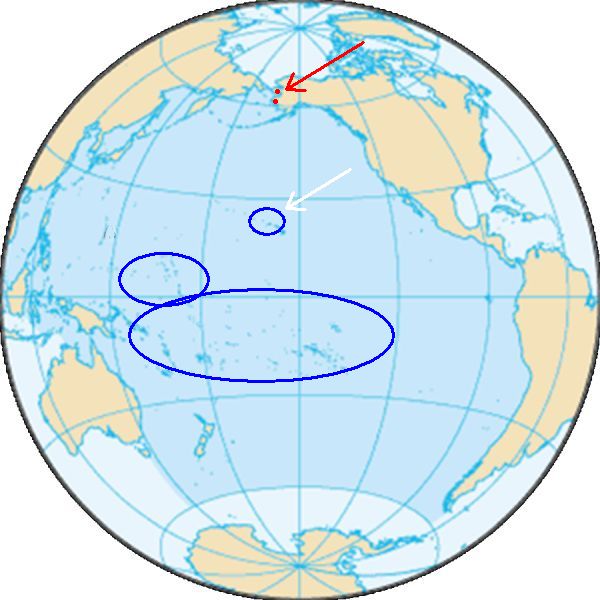
Young curlews follow the adults a few weeks later. They won’t return to Alaska until they’re three to four years old.
This year I happened to visit Hawaii and Alaska on the same schedule as the bristle-thighed curlews. My Life Bird curlew was a fly-by at Kahuku Golf Course, Kauai on February 28, photographed here by Michael McNulty. Then I saw curlews on their breeding grounds near Nome, Alaska in June.
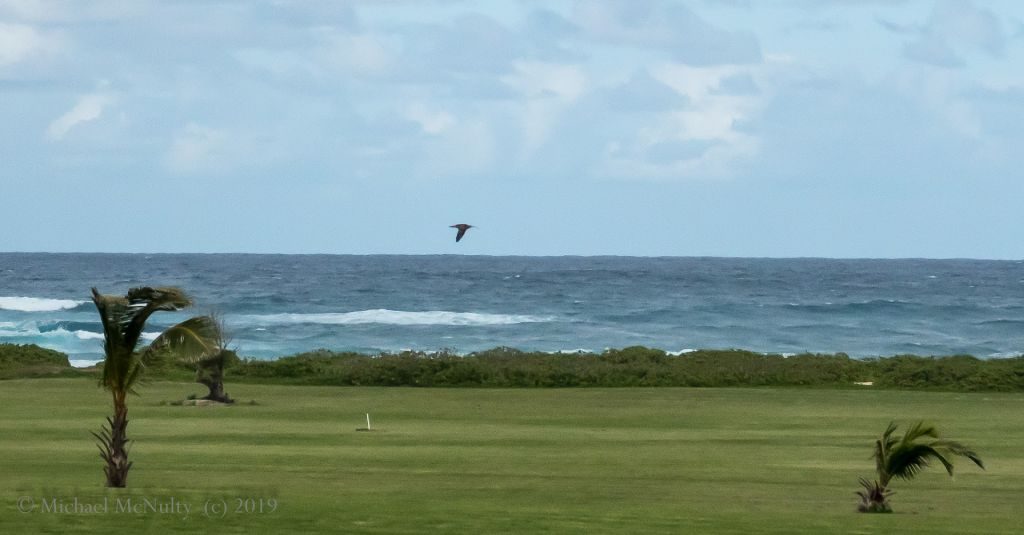
Every year the curlews travel from Hawaii to Alaska. With a worldwide population of only 7,000 birds and sea level rise due to flood their home islands, this amazing bird is vulnerable to extinction.
p.s. Bristle-thighed curlews are closely related to whimbrels, whom they resemble. We saw and heard both species in western Alaska.
(photos by Bettina Arrigoni, Aaron Budgor, Michael McNulty and Wikimedia Commons; click on the captions to see the originals)
Did you have to climb Coffee Dome to see the curlew?
I think that’s where we went. We didn’t have to go far up because we saw and heard them within 15 minutes. Our guide said it was the fastest trip to see them that he’s ever led.
You were good luck Kate!
I think that my cat tried to eat one of these (In Alaska). But it was small, it fit in my mom’s hands